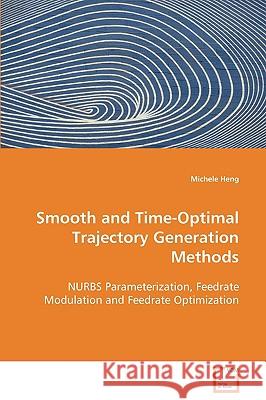Smooth and Time-Optimal Trajectory Generation Methods » książka
Smooth and Time-Optimal Trajectory Generation Methods
ISBN-13: 9783639089103 / Angielski / Miękka / 2008 / 132 str.
In machining complex dies, molds, aerospace and automotive parts, or biomedical components, it is crucial to minimize the cycle time, which reduces costs, while preserving the quality and tolerance integrity of the part being produced. To meet the demands for high quality finishes and low production costs in machining parts with complex geometry, computer numerical control (CNC) machine tools must be equipped with spline interpolation, feedrate modulation, and feedrate optimization capabilities. This books presents the development of novel trajectory generation algorithms for Non Uniform Rational B-Spline (NURBS) toolpaths that can be implemented on new low-cost CNC's, as well as, in conjunction with existing CNC's. The methods, presented here, generate near-optimal feed profiles that have shorter cycle times, approximately 13-26% faster than the feed profiles obtained using the worst-case curvature approach, which is widely used in industrial CNC interpolators. These methods are practical and useful to professional in production and manufacturing and to students, who are interested in industrial robotics and control systems design.
In machining complex dies, molds, aerospace and automotive parts, or biomedical components, it is crucial to minimize the cycle time, which reduces costs, while preserving the quality and tolerance integrity of the part being produced. To meet the demands for high quality finishes and low production costs in machining parts with complex geometry, computer numerical control (CNC) machine tools must be equipped with spline interpolation, feedrate modulation, and feedrate optimization capabilities. This books presents the development of novel trajectory generation algorithms for Non Uniform Rational B-Spline (NURBS) toolpaths that can be implemented on new low-cost CNCs, as well as, in conjunction with existing CNCs. The methods, presented here, generate near-optimal feed profiles that have shorter cycle times, approximately 13-26% faster than the feed profiles obtained using the worst-case curvature approach, which is widely used in industrial CNC interpolators. These methods are practical and useful to professional in production and manufacturing and to students, who are interested in industrial robotics and control systems design.











